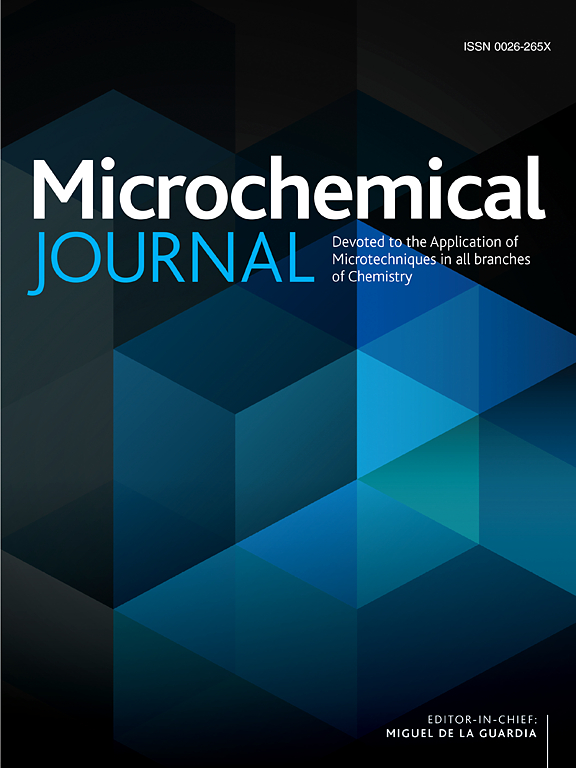Robust pharmaceutical quality control: Dual CV/DPV validation of rGO/poly caffeic acid sensors for wide-range paracetamol tablet analysis
IF 4.9
2区 化学
Q1 CHEMISTRY, ANALYTICAL
引用次数: 0
Abstract
Paracetamol (PA) is a commonly used analgesic and antipyretic drug, and excessive consumption can lead to hepatotoxicity. An rGO/PCA/GCE sensor was fabricated through the synergistic interaction between caffeic acid and reduced graphene oxide. The successful material modification was confirmed using scanning electron microscopy, energy-dispersive X-ray spectroscopy, X-ray photoelectron spectroscopy and electrochemical characterization. The electrochemical behavior of PA on the sensor was investigated using cyclic voltammetry (CV) and differential pulse voltammetry (DPV). Both CV and DPV exhibited a good linear relationship in the concentration range of 1.0–2000.0 μmol/L, with a limit of detection of 29.54 nmol/L. In the real sample detection, the relative standard deviations was less than 4.63 %, and the error rate was below 6.50 %. Through simulated electron cloud and electron orbital analysis, it was determined that the electro-oxidation process of PA involves two protons and two electrons.

稳健的药品质量控制:用于大范围扑热息痛片分析的氧化石墨烯/聚咖啡酸传感器的双CV/DPV验证
扑热息痛(PA)是一种常用的镇痛和解热药物,过量服用可导致肝毒性。通过咖啡酸与还原氧化石墨烯的协同作用,制备了氧化石墨烯/PCA/GCE传感器。通过扫描电镜、能量色散x射线能谱、x射线光电子能谱和电化学表征证实了材料改性的成功。采用循环伏安法(CV)和差分脉冲伏安法(DPV)研究了PA在传感器上的电化学行为。CV和DPV在1.0 ~ 2000.0 μmol/L范围内呈良好的线性关系,检出限为29.54 nmol/L。在实际样品检测中,相对标准偏差小于4.63%,错误率小于6.50%。通过模拟电子云和电子轨道分析,确定了PA的电氧化过程涉及两个质子和两个电子。
本文章由计算机程序翻译,如有差异,请以英文原文为准。
求助全文
约1分钟内获得全文
求助全文
来源期刊

Microchemical Journal
化学-分析化学
CiteScore
8.70
自引率
8.30%
发文量
1131
审稿时长
1.9 months
期刊介绍:
The Microchemical Journal is a peer reviewed journal devoted to all aspects and phases of analytical chemistry and chemical analysis. The Microchemical Journal publishes articles which are at the forefront of modern analytical chemistry and cover innovations in the techniques to the finest possible limits. This includes fundamental aspects, instrumentation, new developments, innovative and novel methods and applications including environmental and clinical field.
Traditional classical analytical methods such as spectrophotometry and titrimetry as well as established instrumentation methods such as flame and graphite furnace atomic absorption spectrometry, gas chromatography, and modified glassy or carbon electrode electrochemical methods will be considered, provided they show significant improvements and novelty compared to the established methods.
 求助内容:
求助内容: 应助结果提醒方式:
应助结果提醒方式:


